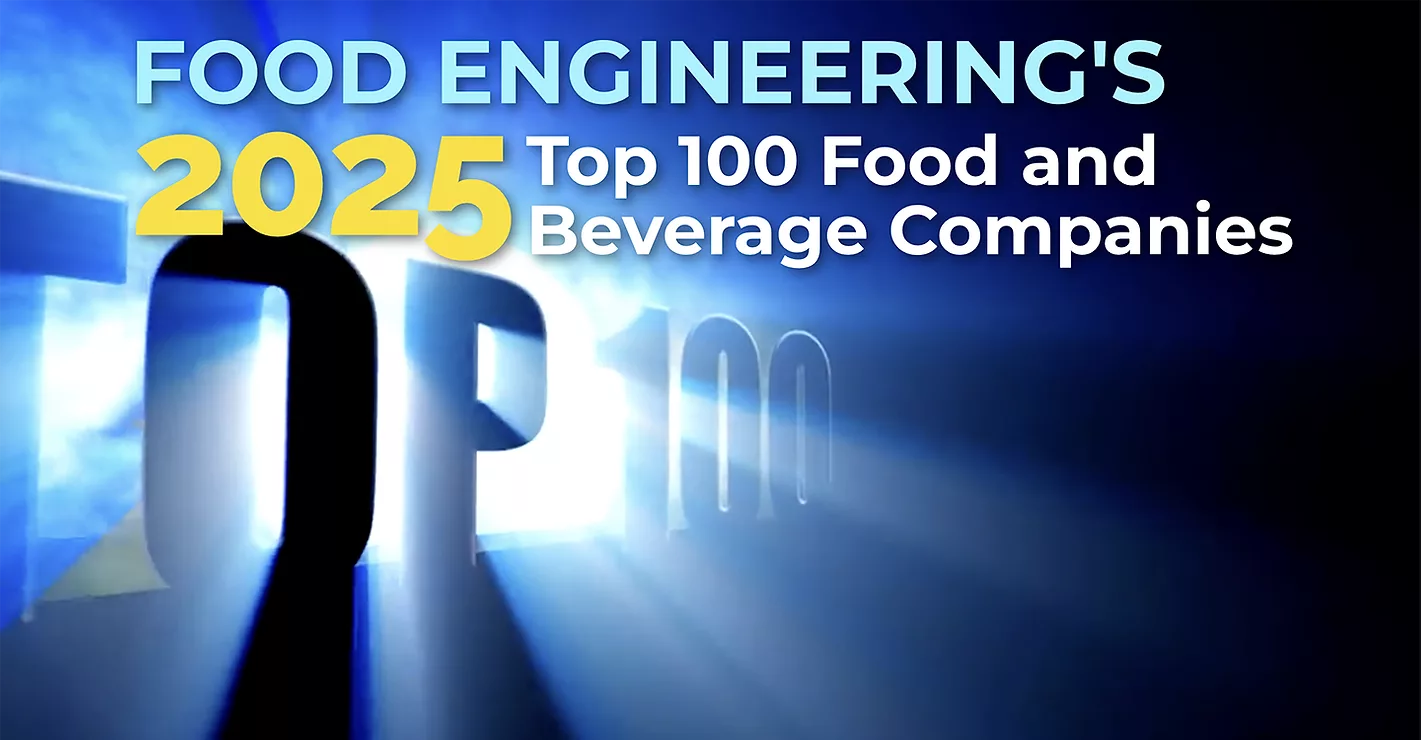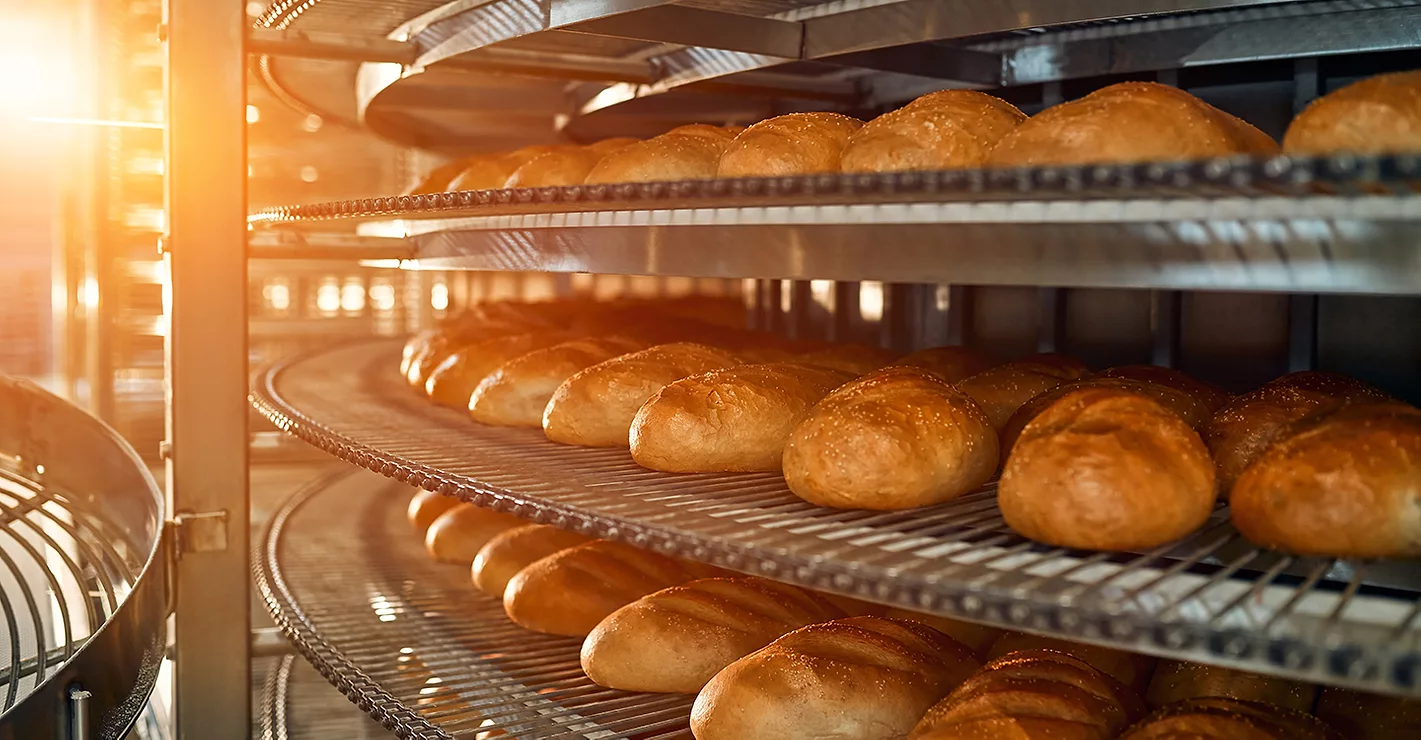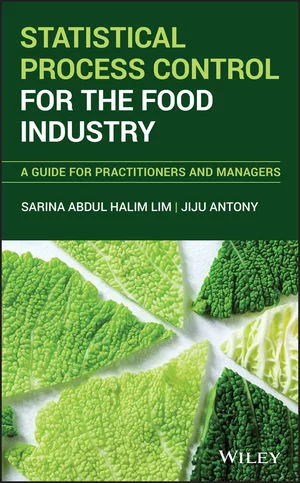Top 100 Food & Beverage Companies
The World's Top 100 Food & Beverage Companies - 2014: Recalibrating strategies for shifting markets
According to multiple financial studies, China is on track to become the world’s largest economy, taking over the US’s number one slot for consumer spending. Together, the two economies now account for one in every three dollars spent globally, according to Euromonitor.
|
Click Here to View the Latest Top 100 Report Click Here to View the List of the 2014 Top 100 Download a Print-Friendly PDF Version of the List |
Meanwhile, over the past 25 years, the population of the Asia-Pacific area has grown by more than one billion, the equivalent of three USAs, says Euromonitor’s Sarah Boumphrey, meaning that more than one in two of the world’s inhabitants now reside in Asia-Pacific countries. In addition, per capita disposable incomes in these countries have risen at an average annual rate of 3.5 percent during the same period, compared to 1.4 percent in the US.
Article Index:
These shifting tides of geographic dominance have produced attractive growth rates in emerging territories, powering the progress of the top 100 players for the past few years. Even as these growth rates begin to slow, these regions continue to hold promise.
“Challenges in Asia, the Middle East, Africa and Latin America have contributed to a general slowdown in the emerging markets’ growth rates. Developed markets, meanwhile, have continued to experience anemic growth at best,” says Paul Bulcke, CEO of Nestlé, which experienced a 5 to 6 percent organic growth and held onto its top position in the listing by pursuing its long-term strategic direction to be the leader in nutrition, health and wellness. It continues to build its presence in the developing nations, and through its 2013 joint venture with New Zealand’s Fonterra (number 23 in the listing), Dairy Partners Americas, Nestlé opened its new CHF 33 million dairy distribution center in Brazil. It also invested CHF 26 million to extend its ice cream factory in Egypt, despite trouble in the region.
Nestlé describes the general environment during the past year as “turbulent, challenging, unpredictable, fast changing, uncertain and dynamic.”
Commenting on the smaller but fast-growing performance in Asia, Oceania and Africa (AOA) nations, Bulcke stresses that, despite the prevailing difficulties, Nestlé will pursue its activities in these areas.
“It’s always the same: What is difficult is worthwhile. Two of our strengths are local management and expertise in handling complexities. We have a very good local presence in Nigeria, for instance, and it is growing nicely. We just hope Nigeria stabilizes politically because it is a difficult market. We are aware of the potential risk of tensions that could spill over,” says Bulcke, who stresses that Nestlé has retained factories in Nigeria, as well as in troubled states such as Pakistan and Syria. “Nestlé can adapt to the local reality. We know how to handle it and how to find the right people. It is one of our strengths,” he concludes.
Reinforcing its own ability to operate in the turbulent world the top 100 players now inhabit, PepsiCo claimed the number two spot in the list. Chairman and CEO Indra Nooyi says, “The operating environment in 2013 was volatile and challenging, and going forward, we expect the amplitude and frequency of change only to increase.”
PepsiCo says it delivered on or exceeded its financial goals, largely due to changes it has made to its business model, moving from a loose federation of countries and regions to leveraging its talents, capabilities and resources globally. |
Nonetheless, PepsiCo says it delivered on or exceeded its financial goals, largely due to changes it has made to its business model, moving from a loose federation of countries and regions to leveraging its talents, capabilities and resources globally.
“In 2013, we began to realize the benefits,” says Nooyi, who confirms an organic revenue growth of 4 percent for the group. “Our developing and emerging markets, a major investment area, continued to perform well despite significant volatility in key regions. As a group, our developing and emerging markets posted 10 percent organic revenue growth, with particularly strong performances in China, Pakistan, Saudi Arabia, Mexico, Brazil and Turkey.
“The growth rates of developing and emerging markets are expected to continue to outpace developed markets for the foreseeable future. The trends present excellent growth opportunities, but will continue to require significant investment and the development of the right people, skills and tools to compete,” explains Nooyi.
Alcoholic drink companies such as Pernod Ricard, which rose 10 places to number 33 this year, are also continuing to access opportunities in China and emerging markets. “Though the slowdown in China is an indisputable fact, Pernod Ricard still recorded a growth of 9 percent there over the year, while Martell increased its growth by a further 16 percent,” according to Pierre Pringeut, vice-chairman and CEO of Pernod Ricard. “In India, we were able to increase our top 14 sales [best performing brands] by 17 percent. These countries are still recording much better economic growth than the Western world.”
To capitalize and build on this growth, the company has allocated additional resources to these territories; approximately 80 percent of the growth in its structure costs is dedicated to the development of its sales forces in the emerging regions.
“We are now looking to the future to determine which markets, like China 15 years ago, will see the strongest growth,” says Alexandre Ricard, deputy CEO and COO, Pernod Ricard. “Two years ago, we launched a major development phase in Africa, where six new affiliates are now operational. Today, 85 million households in Africa have an annual income of over $5,000. In 10 years’ time, this figure will stand at 130 million [households].”
Pringeut stresses that “we must not be afraid of economic cycles, since history has shown them to be the norm. The important thing is to have a sufficiently diversified development model to capture growth, wherever it may be, and an innovation policy that can anticipate new trends.”
This pursuit of growth by the leading companies in Europe and the ability to grapple with change and volatility are being echoed further afield. In China and Brazil, in addition to Japan, key players are boosting their activities at home as well as abroad to establish firm footholds near the top of the listing.
For instance, acquisitions such as Seara Brazil and Masa Leve have extended the reach of Brazilian meat giant JBS into convenience and value-added foods, while boosting its export potential, propelling JBS up two places this year to become the fourth-largest food and beverage company. As part of its strategy to move closer to final consumers, JBS has incorporated its latest purchases into a newly established JBS Foods business unit in Brazil that is dedicated to poultry, hog and processed food production.
“These acquisitions will accelerate the JBS strategy of growth in value-added products. They also will help increase our production capacity in all these categories, generating further value for the company and its shareholders,” says Wesley Batista, CEO of JBS. “In 2013, we observed movements in the global economic scenario that indicated a positive horizon for our business. We believe the recovery of the US dollar has not yet ended, but it will strengthen in relation to the Brazilian real, and our exports will continue to benefit.”
Batista pointed out JBS 2013 exports were 20 percent higher than in 2012, largely due to the increase in consumption and demand in the emerging markets, plus the increase in the number of countries to which JBS exports.
“More than 150 nations receive JBS products from a production platform consolidated in the most competitive regions of the world. The increase in our production platform last year in South America, especially in Brazil, will ensure our production and our exports continue growing,” says Batista, who projects a further 20 percent increase in exports this year.
View the Top 100 Food and Beverage Companies of previous years
|
Focus on the Chinese market
Restructuring and collaborative ventures have punctuated the activities of China’s Mengniu Dairy Co, which rose three places to number 61 in the listing. Operating in what is now the world’s largest economy, Mengniu is tapping into changes that are creating opportunities in China. For example, the government has relaxed its one child policy (opening the way for greater potential infant formula consumption), issued policies to allow further industry consolidation that will help national companies compete on the global playing field, and investigated monopolistic practices for imported milk formula products.
Mengniu has overcome the global challenge of raw milk supply by optimizing the operations of its farms, investing in the Modern Dairy and YST Dairy, and entering into an agreement with Danone (which held onto its 13th position on the top 100 list). The two companies will work together on the restructuring and reorganization of Danone’s chilled dairy business in China, as well as the production and sales of chilled yogurt, chilled yogurt drinks and chilled spoonable dairy-based desserts in the country. In addition, the 2013 acquisition of Yashili has boosted Mengniu’s milk formula presence in the domestic market.
However, these changes have put pressure on Mengniu management as foreign executives and foreign funding have influenced activities on the board, and integration has forced cultural adjustments.
“Our model is new, and our systems are new, so it has been a challenging 12 months,” says Elaine Sun Yiping, CEO of Mengniu. The company has adopted international standards to underpin the quality of its end products in a bid to compete on the world stage. It also has implemented a digital marketing platform, an e-commerce team and CRM (customer relationship management) and SAP systems.
“In the Chinese market, there are still opportunities based on per capita dairy consumption compared to other countries, and our coverage is still not complete,” says Yiping, who adds that all challenges bring opportunities. “Due to the shortage of milk sources in 2013, we have formulated products that rely less on milk, and our yogurt business, for example, achieved an 18.1 percent growth in revenue year over year.
“In 2014, we will continue to focus on consumers and upgrade our operations and processes as we transform into a consumer-oriented and innovation-led food company that offers nutritious and healthy products,” she says. “Externally, we will realign the synergies with our strategic partners and accelerate the development of the high-potential yogurt, milk formula, and import and export businesses.”
Dairy sector growth
Such activities reflect the continuing dynamism of the dairy sector. For instance, Mengniu’s Chinese counterpart Inner Mongolia Yili Industrial Group shot up 11 slots to 53rd place in the global top 100 food and beverage companies listing, and became one of the world’s top 10 dairy companies for the first time ever.
According to Tim Hunt, analyst for Radobank, which produces the Global Dairy Top 20 Report, “Yili’s entry into the top 10 showcases the fast development of the Asian dairy industry. The achievement can be ascribed to the huge market demand created by China’s economic development and a robust expectation for growth across the dairy sector, which allows producers in emerging markets to accumulate capital, develop the motivation to participate, become influencers and even improve the industrial chain globally, giving them the final say in resource allocation.”
Embracing this dairy potential, Meiji of Japan is looking further afield for growth as a contracting population, yen depreciation and market volatility restrict opportunities on the home front. The company is focusing on “higher profitability and strategic investments for future growth,” and has chosen China, the Asian region and the US as three key areas for fostering international business.
In November, the company, via its subsidiary Meiji Dairies, began the production of chilled milk and yogurt products for the Chinese market, while in December, its Meiji-Dairy Trading Shanghai subsidiary began targeting sales to eastern China. Initially, Meiji will offer Meiji Chun-Yi Fresh Milk (chilled milk made using high-quality raw milk) and Meiji Bulgaria Yogurt. In the meantime, it has invested an additional 30 percent in the production of its probiotic yogurts, a value-added area that offers potential for the domestic market.
Investing in what it has identified as three growth categories (dairy-based beverages, infant nutrition and branded cheese), FrieslandCampina recorded a good year, following its formation five years ago. In 2013, the company went from number 27 to number 22 in the listing, paid out the highest milk price ever and achieved growth primarily in Asia.
“In Indonesia and Vietnam, FrieslandCampina improved its market positions after several difficult years,” says Cees ‘t Hart, CEO of FrieslandCampina, adding developments in Europe were less favorable due to the persisting economic conditions. “In 2013, FrieslandCampina performed well in infant nutrition and ingredients for the food industry. By contrast, volumes and market shares in Europe were under pressure, and currency translation differences had a negative effect on the results in euros.” To mitigate this, FrieslandCampina, as all the key players, is concentrating on innovation and focusing on profitable product areas.
Reshaping the business
PepsiCo is familiar with the concept of strategic investment in innovation to help spur growth. As part of its reshaping into a cohesive global enterprise, PepsiCo appointed Mehmood Khan, an endrocrinologist, to be its chief scientific officer for global R&D.
When he joined PepsiCo, Khan says, “The budget was fragmented. People were distributed with no reporting relationships. The mandate I got was to knit it all together. Change the organization. Change the innovation process. We do not see sustainable growth without this, and we will invest.”
Since 2011, PepsiCo’s R&D budget has increased by more than 25 percent each year.
"We’ve been creating around a quarter-billion dollars a year in operational efficiencies—cost savings in materials, energy, water and distribution—through the way we’ve designed the products from scratch.” |
“We started to talk about platform innovation, platforms we could leverage in multiple countries, scale and use across our portfolio,” says Khan. In the past, net revenue growth from R&D products (i.e., products launched in the past 36 months) achieved a rate in the mid-single digits. “In 2013 versus 2012, however, we increased that to 9 percent. On a $70 billion base, that’s another $700 million in revenue. In addition, we’ve been creating around a quarter-billion dollars a year in operational efficiencies—cost savings in materials, energy, water and distribution—through the way we’ve designed the products from scratch.”
Such innovation illustrates what it takes to stay at the top in today’s difficult operating environment, and gives inspiration to all food and beverage companies as they tackle the challenge of being the best on the global playing field.
Looking for a reprint of this article?
From high-res PDFs to custom plaques, order your copy today!






